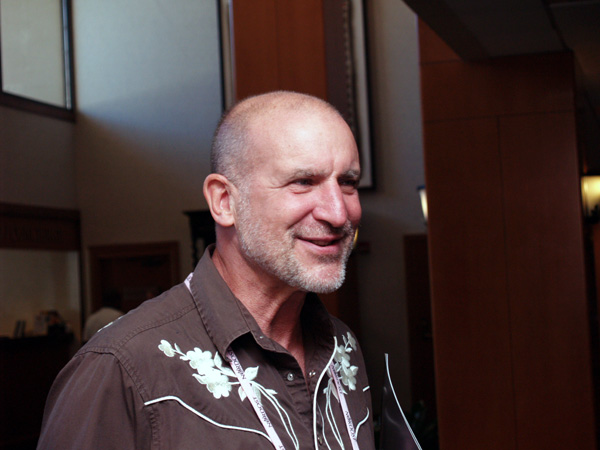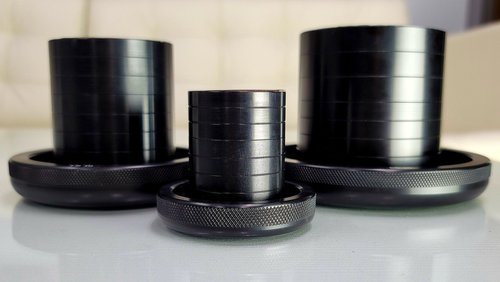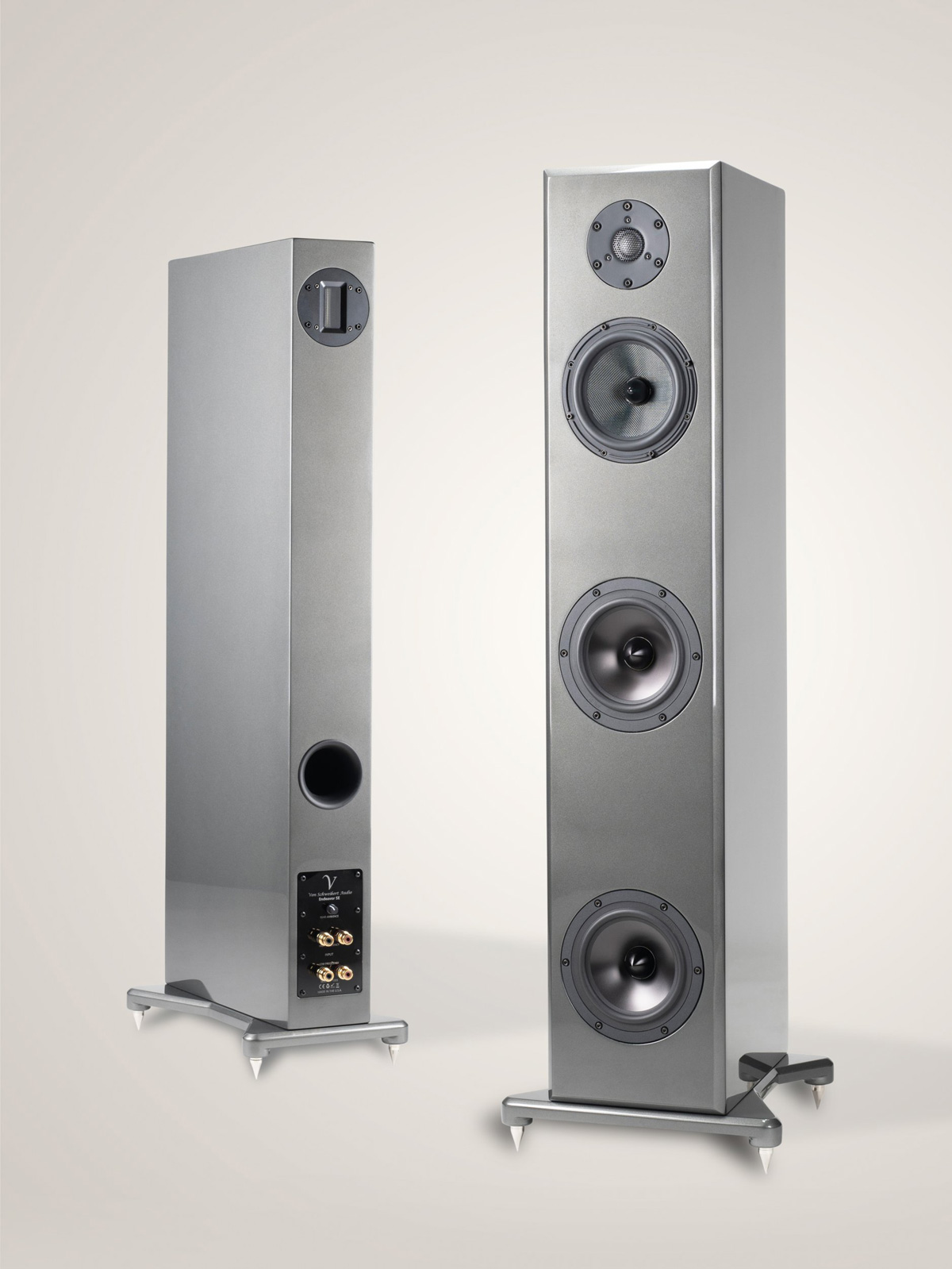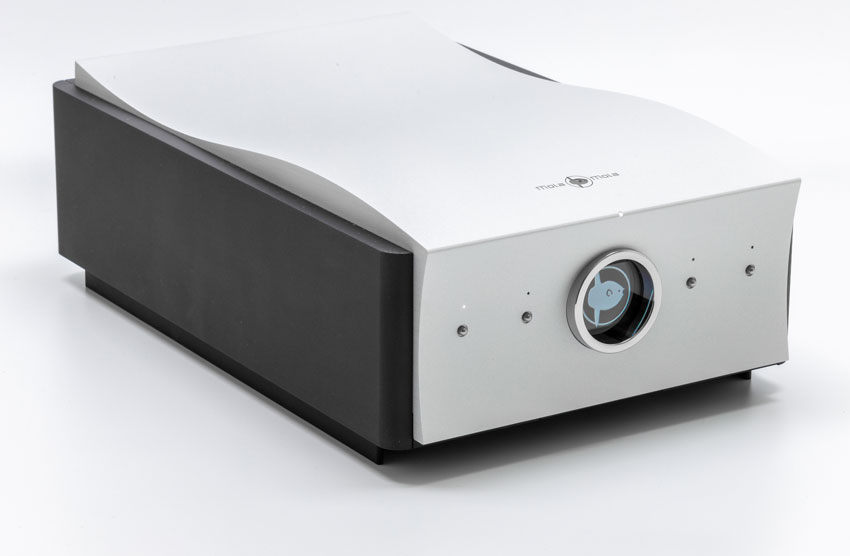How did you come up with the name "KC VIBE"?
To really know the authenticity and integrity of something, you must know its place of origin. We all know the role provenance plays in art and collectables. There is a midwestern value of doing something well. With a straightforward, unassuming manner.
What design goals did you set out to achieve with the VIBE?
The goal was to make a phono preamp I would be proud to build, and the user would be proud to own. That is [true] for all my products, at all the price points. The KC VIBE had to meet that standard.
What design compromises were required to get the VIBE's price below $1000, well below the price point of most other Sutherland Engineering phono stages?
I don't think about compromises. I think about making good design choices. There are many branches on the design tree. Making good choices that all fit together harmoniously is more important than throwing money at a project.
In the assembly area there are 100's of bins that hold the individual components for the Sutherland products. All carefully selected, over the years, for solid performance and proven reliability. Most of the VIBE components come from that same stock of premium parts. We only had to add 5 new parts bins to build the KC VIBE circuit boards!
I totally enjoyed laying out the circuit board for the VIBE. I just can't stop short of perfection in every little detail. The last 5% takes more time than the first 95%. There is a point where it as good as I can make it. Then it is done.
All that craftsmanship can be reproduced consistently in every VIBE. The assembly people can enjoy their work with a sense of pride.
As the above shows, I just couldn't find any energy for answering your question about compromise.
A look inside the KC VIBE shows quality and craftsmanship. It is also, obviously, less expensive to build than my more expensive products.
The VIBE strikes me as elegantly minimalist by design. Why eschew convenience features like front-panel cartridge loading and gain settings when so many other manufacturers offer these features?
Your first sentence effectively answers the question posed in the second sentence. There is no way to have elegant minimalism AND also include every feature offered by other manufacturers. My design work is very disciplined. I use the dictum that simplicity is the best approach to maximize musicality. I don't just say it. I do it.
If such a person exists, how would describe the KC VIBES's target customer?
They are driving a Subaru.
How did you go from designing hybrid electrostatic speakers with Gayle Sanders (under the Martin-Logan name) to designing minimalist, high-end electronics? And why the core emphasis on phono stages?
For the record, my middle name is Logan. In the early M-L days, I was able to contribute some ideas that worked very well. Some still in use. But the business challenges (that's an understatement) were just more frustrating than I was willing to deal with. I happily moved on.
When in the "luxury items to Asia" phase, there was a request from Japan for a phono preamp to go along with the C-2000 line-preamp and the A-2000 power amp. So, came the PH-2000. Sold a few and it was well reviewed in Asia and the US.
Vinyl was in a slump in the US at that time—with just a glimmer of hope for survival. I bought an LP-12 so I could design the PH-2000. There were very few phono preamps on the market at that time. Regular preamps had become line-level only. Very few had built in phono stages. There was a huge void. At $6800, the PH-2000 was not going to fill that void.
To fill that void, we needed an affordable product and a marketing channel. That led to the AcousTech PH-1. I designed and built it. Chad Kassem sold it to his vinyl customers. I still hear from those customers telling me how much they are enjoying their PH-1
I established my own dealer/distributor network and moved on with more designs. The PH-1 was followed by the PhD, the Hubble, the Ph3D, the Insight, the 20/20, the DUO, the PhonoBlock, the Argentum, the Argentum Plus, the MCX, the N1 and the KC VIBE. Whew! There was also the Timeline for checking turntable speed.
Over time, Sutherland became known as a phono preamp specialist. That is a good place to be.
I have seen pictures of the very rare C-1000 preamp and A-1000 mono amplifiers. As I recall, these were limited run designs that cost a pretty penny. Do you have plans to offer products in this segment of the high-end in the future. When can we expect a Ron Sutherland designed power amplifier?
I have some models that are plenty expensive. Even those models are very understated. No superfluous features. No bling. No profligate spending.
Back in those early days I was trying to impress the market (and myself) with luxurious, cost no object expressions of how clever I was. It was fun for a while. But not well aligned with how I really am.
The design of a first-class product at a reasonable price is so much more challenging—and fulfilling.
There is the N1. A full-featured preamp. Line level, phono preamp and power supply an IN ONE case. That's what I use in my home system. For trade shows, I wanted an all Sutherland stack of components. So, I designed the PowerBlocks. They were mono power amps based on IcePower modules. They worked pretty-well. Nothing special. Really nothing I cared to put on the market.
For now, I am glad to focus on phono preamps.
How did you weather analog's dark days in the early 80s? To what do attribute analog's enduring appeal?
Like so many people, I sold my turntable (Michell Gyrodec) and got a CD player (Revox). My records went into boxes and into the basement. There was no loyalty to vinyl—I was having a good time designing line-level preamps and power amps. I had no idea they were dark days.
Then, many years later, I finally got a new turntable (LP-12 with Graham arm, I used that for 12 years), I felt like I was back in the warm arms of an old lover.
In the same vein, how have you managed to survive (and hopefully flourish) when other manufacturers of remarkable analog products have fallen to market forces?
Every day I count my blessings. I am so grateful to my customers. It is truly a partnership. There is a mutual respect and appreciation between us.
I have a small artisanal company. Why would I relinquish my design privileges to marketing forces established by the corporate players?
My designs are guided by a disciplined adherence to simplicity of the signal path that is executed with great care. It is a heart-felt expression that I share with like-minded people.
What future does analog have in a world of servers, renderers, ever-evolving DAC's, MQA, and streaming music services?
Your question contains the answer. Analog has proven to be an enduring format. It has been there for the long run and people can safely build a legacy music library. No fears of obsolescence. All the other sources on your list shift around with the latest technological fad. Here today, gone tomorrow. CDs aren't even on your list.
































